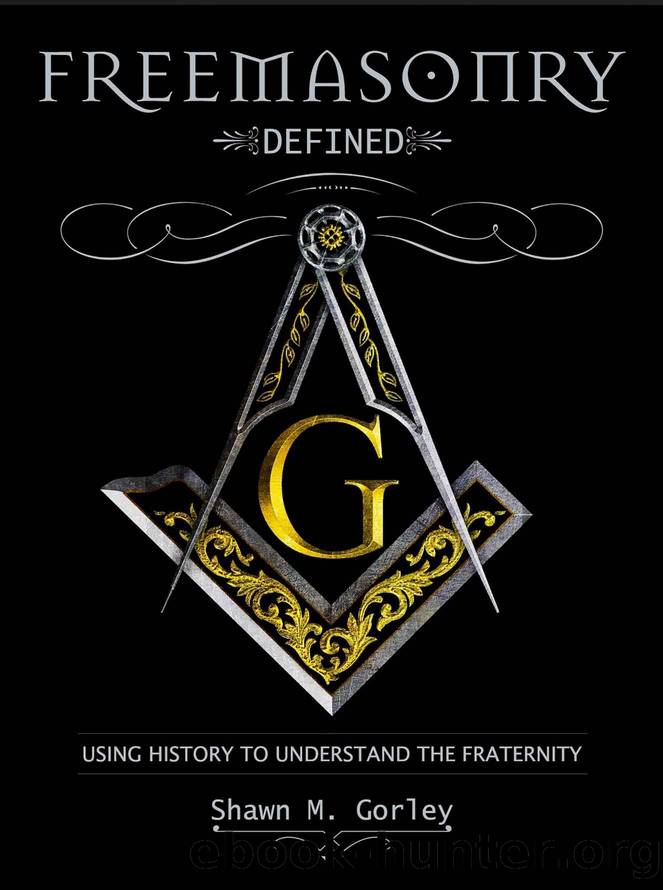Freemasonry Defined, Using History to Understand the Fraternity by Gorley Shawn M

Author:Gorley, Shawn M.
Language: eng
Format: epub
Publisher: Shawn M. Gorley
Published: 2013-11-18T00:00:00+00:00
Later in life Swett wrote that one of his teachers:
âDid something more than textbook recitations. He talked, he explained, he illustrated, he even laughedâ¦how genial he was! Arithmetic was made easy, grammar was sweet to the taste, and the whole world seemed delightful.â[29]
Swett attended many local academies and was an educated man. He even obtained a teaching certificate at the age of seventeen and enrolled himself into a newly opened teacher training institute. However, at that time he had not yet fully decided to take on a career in teaching. After all it was the mid eighteen hundreds and not unlike many others he felt the fever of the California gold rush in which he decided to partake in, albeit very briefly. Upon arriving in San Francisco in 1853 after a long sail at sea from Boston, Swett worked for a few months with little reward working in the mines and on farms. Destitute and broke he began teaching in San Francisco as Principle of the Rincon School. He remained at that position until 1862, which was also the year he became a Freemason, joining Phoenix Lodge #144 of San Francisco.
In retrospect, the new state of California seemed to be an ideal place to establish a free, comprehensive and public school system like the ones that were already in place in the eastern U.S. by the mid 1800âs. With the gold rush going on, the money was there, and with that California attracted teachers as well as would be teachers to the state. The only thing was that standards needed to be set for a thriving and beneficial set of school systems to operate. âCaliforniaâs first constitution in 1849 called simply for a âsystem of common schools,â the term in use at the time for free elementary schools supported by public money, and an elected state superintendent. The delegate at the constitutional convention set the term at three months because they thought it would be easier to fund the shorter term than a longer one. But they did not write funding procedures or guidelines into the constitution.â[30]
Brother Swett was elected to the position of State Superintendent of Public Schools in 1862 and remained in that position until 1867. In 1863 he founded the California Teachers Association. His call for this led to the California Educational Society, which in 1875 became the California Teachers Association. âThe most notable work of his administration was the drafting and securing of the passage of the âRevised School of Law,â which became the permanent foundation of the free school system in California.â[31] This included âsecuring the passage of laws creating a state board of education, providing teachers institutes where poorly equipped teachers might get help, organized the schools into grades, establishing school libraries, providing for the certification of teachers, and laid out the financial basis for the support of public education. Before the close of his term, he had abolished tuition and made public schools absolutely free in all districts for at least five months each year.
Download
This site does not store any files on its server. We only index and link to content provided by other sites. Please contact the content providers to delete copyright contents if any and email us, we'll remove relevant links or contents immediately.
Patriot by Alexei Navalny(335)
Museum of Antiquity by T. L. (Thomas Louis) Haines(275)
The Story of Joan of Arc by Andrew Lang(258)
The Memoirs of Pere Labat, 1693-1705 by Jean Baptiste(232)
The Apollo Moon Missions by Randy Walsh(231)
Richard III and the Princes in the Tower by A.J. Pollard(229)
2,2-Dimethyl-3,4-dihydro-2H-1,4-benzoxazines as isosteres of 2,2-dimethylchromans acting as inhibitors of insulin release and vascular smooth muscle relaxants by Bernard Pirotte & Xavier Florence & Eric Goffin & Philippe Lebrun(226)
Fry The Brain: The Art of Urban Sniping and its Role in Modern Guerrilla Warfare by John West(186)
A History of the Peninsular War, Vol. 5, Oct. 1811-Aug. 31, 1812 by Charles Oman(178)
The Memoirs of Count Grammont â Complete by Hamilton Anthony Count Walter Scott(175)
1916 - The Battle of the Five Empires: 15 May - 28 September 1916 by Benoît Chenu(173)
Life of Napoleon Bonaparte, Volume I. by Walter Scott(173)
Maleficium: Witchcraft and Witch Hunting in the West by Gordon Napier(168)
Rasputin the Rascal Monk by William Le Queux(161)
Famous Fights of Indian Native Regiments by Reginald Hodder(158)
BY MARK Twain, Twain - The innocents at home by 1881(146)
Father Browne's Titanic Album by E. E. O'Donnell(145)
The Thoughts of Marcus Aurelius by Marcus Aurelius(142)
Joanna of Flanders by Julie Sarpy(131)
